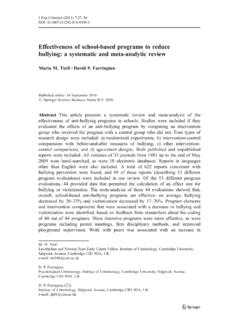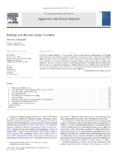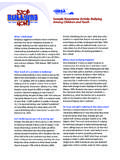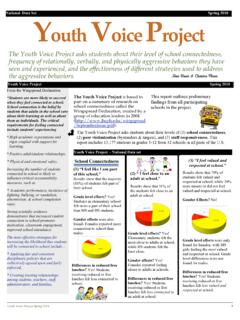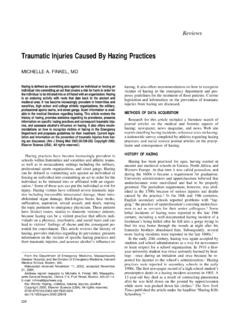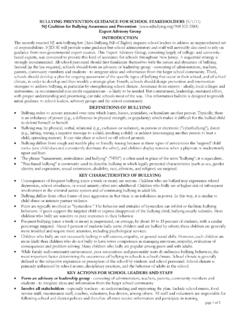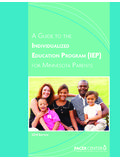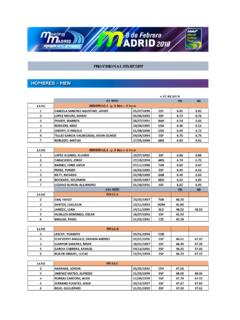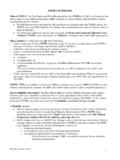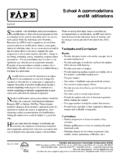Transcription of The Youth Voice Project
1 Stan Davis and Charisse Nixon, Youth Voice Project This study is the first known large-scale research Project that solicits students perceptions about strategy effectiveness to reduce peer mistreatment in our schools. We believe that students voices are an invaluable resource to increase our understanding of effective prevention and intervention efforts. The goal of this Project is to compile a body of knowledge describing the most helpful interventions in order to help adults and Youth reduce bullying and harassment in their own schools.
2 It is our hope to use this information to guide educators, parents, and Youth in applying effective interventions to reduce bullying and subsequently, optimize students development. Thank you for your interest in our Youth . Sincerely yours, Stan Davis and Charisse Nixon Preliminary results from the Youth Voice Research Project : Victimization & Strategies Stan Davis and Charisse Nixon, Youth Voice Project Page 2 of 20 Stan Davis and Charisse Nixon, began the Youth Voice Research Project to give young people a Voice in defining the effectiveness of different interventions which are intended to reduce negative peer behaviors, along with the harmful impact that often accompanies those behaviors.
3 Educators and other professionals have implemented a wide range of interventions to reduce the negative effects of bullying and other negative peer behaviors on Youth . Past efforts have included, but are not limited to: telling all students that negative behaviors are harmful advising and training students who are mistreated by peers to use a range of assertive behaviors to discourage the mistreatment building staff-student connections planning for and using consistent and effective disciplinary responses to negative peer behaviors encouraging bystanders to confront and discourage the unkind behavior classroom discussions and schoolwide assemblies encouraging peers to include excluded Youth meeting with
4 Students who mistreat others and with the students who are mistreated to restore connections and build empathy peer norms interventions that make clear to young people that most of their peers oppose mistreatment. social skills training for all students, for Youth who are mistreated, and for Youth who mistreat others. whole-school programming and more. To the best of our knowledge, the Youth Voice Research Project is the first large- scale national effort that asks young people who have been mistreated by their peers about the effects of different specific actions by themselves, by adults at school, and by other students.
5 We will be analyzing the data from this survey Project for some time. The purpose of this preliminary summary is to provide an initial description for some of these data. Methodology: Working with several colleagues and adolescents themselves across the United States, we created an on-line survey instrument to assess school connectedness, varying forms of peer victimization, as well as students strategies used to address the victimization. We were particularly interested in examining effective and ineffective strategies from students perspective.
6 Organization of the survey The confidential online questionnaire first asks young people demographic information about themselves and then asks them how often they were victimized by their peers ( , called names, hit/threatened, and socially excluded). Students in grades 5 12, representing 25 schools in 12 states completed the survey (N = 11,893). Preliminary results from the Youth Voice Research Project : Victimization & Strategies Stan Davis and Charisse Nixon, Youth Voice Project Page 3 of 20 Consistent with past work (see Olweus, 1993; 1997), this initial report includes those students who reported peer victimization regularly, that is, at least 2 two times a month or more (~ 22% of our sample; N = 2614).
7 These students were then directed to a series of questions focused on what they, adults, and other peers did about what was done to them. Knowing the importance of perceived trauma, we then asked those students who were being mistreated to assess the impact of the victimization. Responses ranged from mild to very severe. Students were given four choices: Mild: What they did bothered me only a little (1192 students or 46% of students reporting peer victimization). Moderate: It bothered me quite a bit (948 or 36% of students reporting peer victimization).
8 Severe: I had or have trouble eating, sleeping, or enjoying myself because of what happened to me (294 or 11% of students reporting peer victimization). Very severe: I felt or feel unsafe and threatened because of what happened to me (180 or 7% students reporting peer victimization). The other students in the survey- those who reported that they were not mistreated or victimized by peers- were directed to an alternative survey about their observations and experience as bystanders. Demographics of those students reporting at least moderate trauma from peer victimization: Students surveyed were from Elementary, Middle, and High Schools in many parts of the United States.
9 Schools were assured of anonymity and confidentiality to encourage participation in this research. The map indicates the states (but not the exact locations) of schools that are currently represented in the survey. Some states are represented by more than one school. This summary highlights the data from those students who reported they were mistreated by peers twice or more in the past month AND were moderately, severely, or very severely affected by the peer victimization (N = 1,420). These students make up 54% of the students who reported peer mistreatment and 12% of our entire survey group.
10 Preliminary results from the Youth Voice Research Project : Victimization & Strategies Stan Davis and Charisse Nixon, Youth Voice Project Page 4 of 20 Gender: Students were asked to identify themselves as either male (42%) or female (54%). To be sensitive to issues surrounding sexuality, students were also able to identify themselves as prefer not to answer (4%). Grade Level: The majority of traumatized students were in grades 6-8. Special Education and Physical Disability: Approximately 6% of those traumatized students reported receiving special education assistance.
